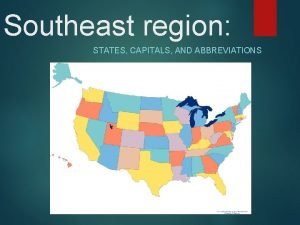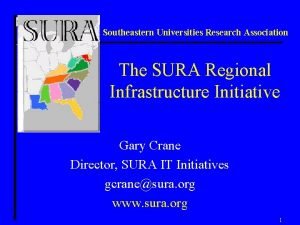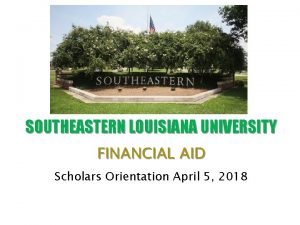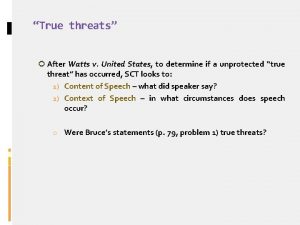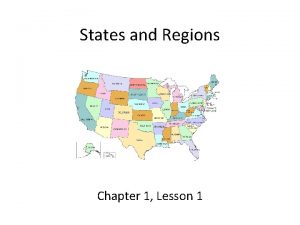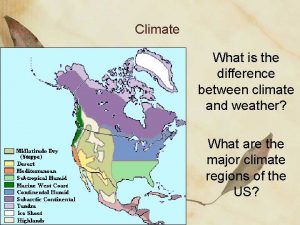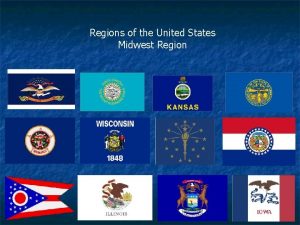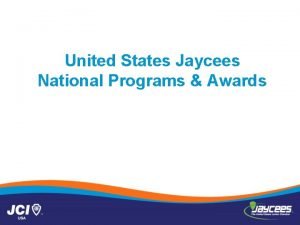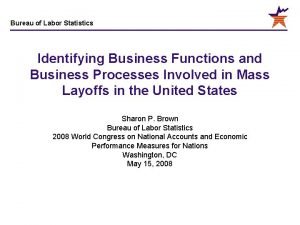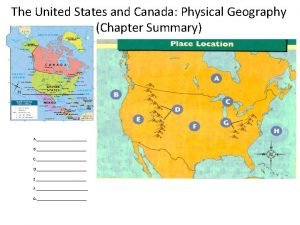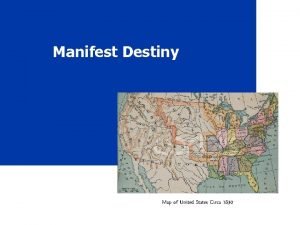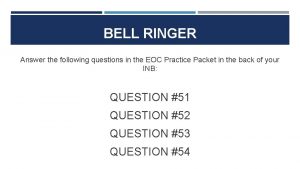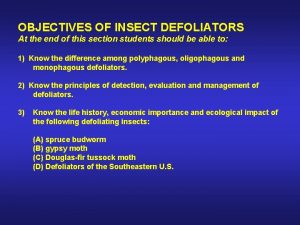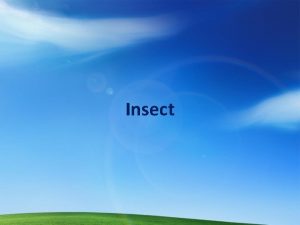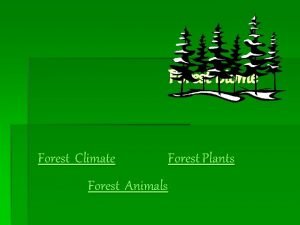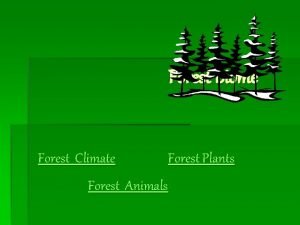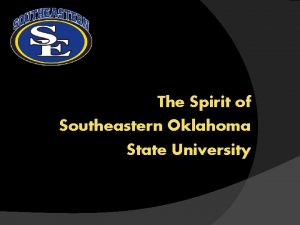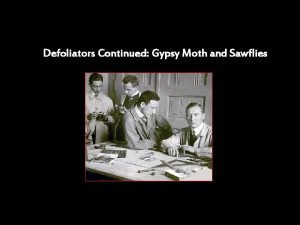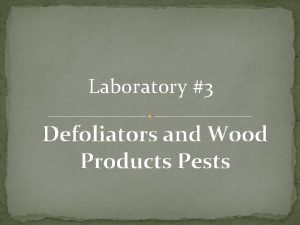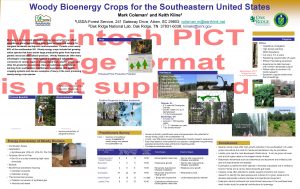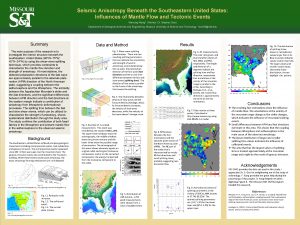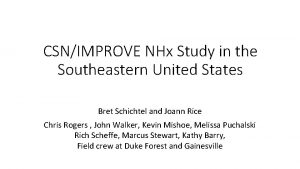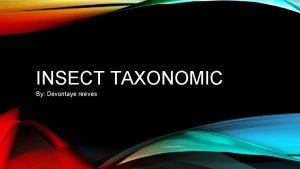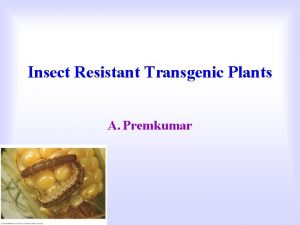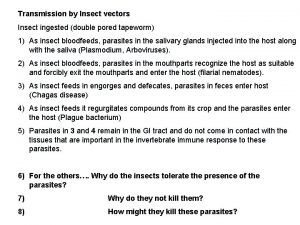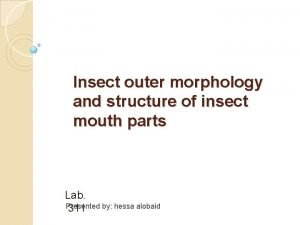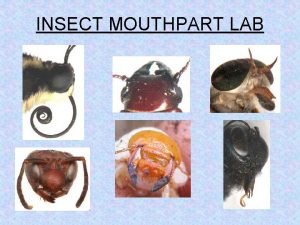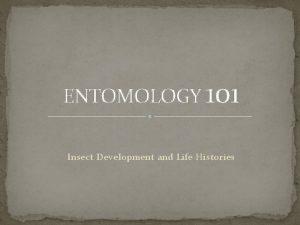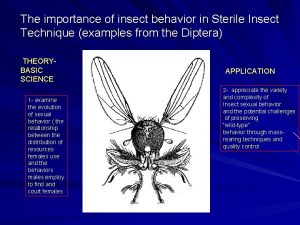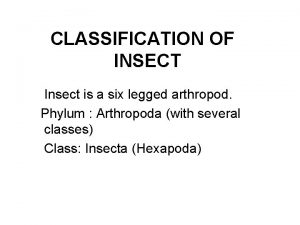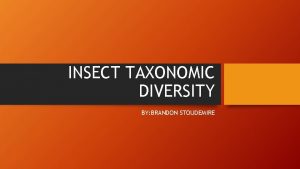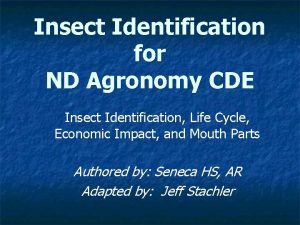Insect Defoliators of the Southeastern United States Forest





































- Slides: 37

Insect Defoliators of the Southeastern United States Forest Health Guide for Georgia Foresters Terry S. Price – Entomologist http: //www. gfc. state. ga. us

Hardwood Defoliators Greenstriped Mapleworm Orangestriped Oakworm Spiny Oakworm Buck Moth Oak Skeletonizer Forest Tent Caterpillar Eastern Tent Caterpillar Catalpa Sphinx Walnut Caterpillar Variable Oakleaf Caterpillar Gypsy Moth Locust Leafminer Larger Elm Leaf Beetle Japanese Beetle Yellow Poplar Weevil

Lepidoptera Oakworms in the genus Anisota, are common throughout the South and do considerable damage in forest and landscape trees. Common species are the orangestriped, pinkstriped and spiny oakworms

Orange Striped Oakworm Feed on various oaks and sometimes birch and hickory.

Spiny oakworm

The greenstriped mapleworm, prefers maples but will feed on boxelder and oaks

Buck moth larva The buck moth feeds primarily on oaks.

The oak skeletonizer

Oak Skeletionizer Damage

The oak skeletonizer was responsible for extensive defoliation of chestnut oak over a 300, 000–acre area in North Georgia from 1986 to 1999

Note key-hole shaped spots Forest Tent Caterpillar Forms no tent, feeds on many species

Eastern Tent caterpillar

Catalpa sphinx moth.

Feeds on walnut, butternut, pecan, hickory. Walnut caterpillar

Variable Oak caterpillar

Coleoptera - Hardwoods Locust leaf miner – nymph, larva and adult

The larger elm leaf beetle

The Japanese beetle

Conifer Defoliators Spotted Loblolly Pine Sawfly Virginia Pine Sawfly White Pine Sawfly Slash Pine Sawfly Hetrick's Sawfly Warren's Sawfly Blackheaded Pine Sawfly Red-Headed Pine Sawfly Abbott's Sawfly Introduced Pine Sawfly Loblolly Pine Sawfly Pine Webworm Pine Colaspis Beetle Pine Chafer Beetle Evergreen Bagworm

Sawflies

Black headed sawfly

Lepidoptera - conifers Pine webworm

Everygreen bagworm


Pine Colaspis beetle Coleoptera (Conifers)


Pine Colaspis beetle damage

Pine Chafer Beetle

Stinging Caterpillars that occur in Southern US Saddleback caterpillar

Hag Moth Caterpillar

Puss Moth Caterpillar. Most dangerous of the Stinging caterpillars – symptoms may last 12 hours

IO Moth Caterpillar

Stinging Rose Caterpillar

Mimicry – pretending to be something your not so as to keep from being eaten.



Questions to answer for Insect Defoliators: 1) How do polyphagous, oligophagous and monophagous defoliators differ? 2) How is the presence of a defoliator detected and evaluated? 3) Describe the basic life cycle of the spruce budworm. In what part of the U. S. is this insect a problem? 4) Describe the basic life cycle of the gypsy moth. What is the potential of this insect becoming a problem in Alabama? 5) Describe the basic life cycle of the Douglas-fir tussock moth. Where is this insect a problem? 6) How do humans contribute to the spread of Gypsy Moth in the United States? What is one major difference between the Gypsy Moth and the Asian Gypsy Moth. 7) What is ‘Disparlure’ and what is its role in integrated pest management? 8) Why is damage by the Douglas-fir Tussock moth generally more serious than that caused by the Gypsy Moth? 9) Why would foliage feeding insects generally be more important in the Southern Region than in some other parts of the U. S. ? 10) Why are native defoliators generally less of a problem than those introduced from other countries?
 Southeastern states pupil transportation conference
Southeastern states pupil transportation conference Southeastern states and capitals
Southeastern states and capitals Uscg sector southeastern new england
Uscg sector southeastern new england Southeastern and gulf cultures
Southeastern and gulf cultures Southeastern universities research association
Southeastern universities research association Leonet selu
Leonet selu Awake united states song
Awake united states song Watts v united states
Watts v united states Native american tribes in the united states
Native american tribes in the united states American column & lumber co v united states
American column & lumber co v united states Who are the three creators of money in the united states
Who are the three creators of money in the united states Yosemite sam confederate
Yosemite sam confederate William cockerill invention
William cockerill invention Von thunen agricultural model
Von thunen agricultural model United states lactation consultant association
United states lactation consultant association 5 regions of united states
5 regions of united states United states student association
United states student association Subtropical united states
Subtropical united states Chapter 6 human geography of the united states
Chapter 6 human geography of the united states Nnn
Nnn Why did the united states invade cuba in 1898
Why did the united states invade cuba in 1898 Expansion of the united states of america 1607 to 1853 map
Expansion of the united states of america 1607 to 1853 map United states jaycees
United states jaycees 2 houses of congress
2 houses of congress Immigration to the united states
Immigration to the united states What did manifest destiny do
What did manifest destiny do United states bureau of labor statistics
United states bureau of labor statistics When mr pirzada came to dine analysis
When mr pirzada came to dine analysis Physical features of the united states
Physical features of the united states 36 30 line
36 30 line Chapter 2 free enterprise in the united states
Chapter 2 free enterprise in the united states Norwegians were most likely to migrate to the united states
Norwegians were most likely to migrate to the united states Ap grading review
Ap grading review Heart of atlanta motel v. united states
Heart of atlanta motel v. united states Define landform
Define landform What is the salad bowl theory
What is the salad bowl theory Us map 1830
Us map 1830 How did these events affect the united states
How did these events affect the united states

